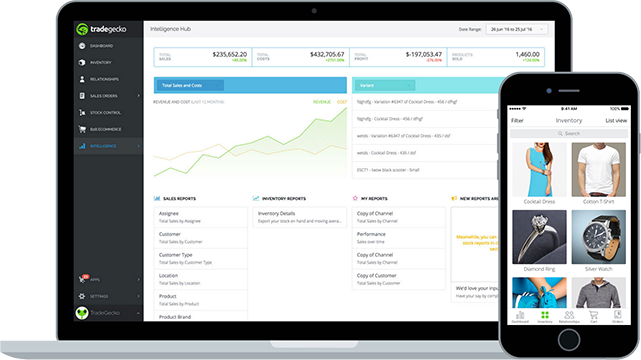Your suppliers could be really strict about sticking to their MOQ, and you find yourself reluctantly spending money that could be put towards growing your business. Maybe they appealed to your love of a good bargain, plying you with offers of price quantity breaks. After all, purchasing an extra 20% to enjoy a 10% discount sounds like you’re enjoying a great deal… right?
Wrong. You may think you’re saving money by ordering more - after all, if you’re going to have to reorder at some point, you might as well enjoy better prices. But the amount you think you’ve saved by ordering enough for a price quantity break probably won’t even cover the increase in carrying costs.
And every item that sits unused in your storage facility is taking up space that could be used for carrying faster-moving items, or experimenting with a new product line.
4. Say goodbye to dead stock
Do you remember that product you thought was going to be a hot seller, but it was a total flop? Yes, that one, the cartons sitting at the back of your warehouse. These could also be the fate of products you’ve overstocked because of MOQs… and promptly forgotten about as the season pass.
If you’re looking to get rid of your dead stock, you can:
- Bundle it with complementary popular items and sell the combination at a significant discount.
- Return it to your supplier if their return policy allows for it - but do remember, there’s a high chance they’ll charge you a restocking fee and refund you in store credit.
- Donate it if your country gives you tax deductions for the market value of donations to charities.
Even if you’re feeling like you’re making a loss for letting your products go for next to nothing, remember that Elsa was probably singing about dead stock. Let it go! And once you clear out the dead stock that’s clogging up your business, you’ll have more space to dedicate to more profitable products while reducing your carrying costs.
5. Reduce your supplier lead time
Think of what you could do if only you could get your supplier to reduce their lead time. So instead of taking 10 days for a new shipment to reach you, they’ll be able to do it in seven days. That means you’ll have the opportunity to cut down on the amount of stock that you keep on hand to cover your waiting time. And with a higher frequency of shipments, you can also start looking into ordering smaller quantities more often and reduce the size of your storage facilities.
If you’re wondering how to get your supplier to agree (and not increase shipping costs), we’ve got some suggestions. Assuming you’ve been working with that supplier for a while, having a good working relationship is definitely a step in the right direction. And do remember to highlight that if they can reduce the lead time, you’ll definitely be making more frequent orders.
6. Try switching to a vendor managed inventory
Do you occasionally ask your supplier for an emergency shipment because your stock is selling out too quickly? Or do you sometimes sigh and think it would be nice if you could get your suppliers to manage their products within your store for you?
Well, transiting to a vendor managed inventory (VMI) can make these hopes a reality! It means you’ll leave your suppliers to manage their own products within your inventory. You won’t have to purchase any more suboptimal quantities, since it’s now your supplier’s job to ensure you’re always in stock.
And your suppliers will thank you too! They’ll have a better idea of how to adjust their output to match customer demand - meaning you won’t need to ask favors to expedite shipping or face dreaded out-of-stock situations.
7. Get an inventory management software solution
You totally knew this one was coming, but let’s chat about what an inventory management software solution can do for your business.
Did you know 78% of SMBs don’t use inventory management software yet? But of the 22% that do, they’re really in favor of it, because it gives them huge savings of a precious resource - time. Of the 22% using it, 16% say they’ve saved a day or more, 39% saved 5 hours or more, and 37% saved less than 5 hours, all by automating inventory management.
So how does using inventory management software save time?
- You get to enjoy real-time updates on stock movements across all sales channels - no more spending hours manually updating your inventory every day.
- Say goodbye to spending hours collating monthly/yearly reports on sales and stocks with inventory management software collating these into an easily understandable format.
- Good inventory management software will let you easily integrate with a whole range of add-ons! You’ll be able to integrate your inventory management with multiple sales channels, accounting, shipping, and fulfillment apps… and save time, human resources, and money.
If you’re part of the majority that doesn’t use a cloud-based inventory management software solution, it’s time to consider joining the movement. After all, most of your peers have enjoyed a significant decrease in time spent managing inventory… so why not join them and give it a shot?
Sources: 1











